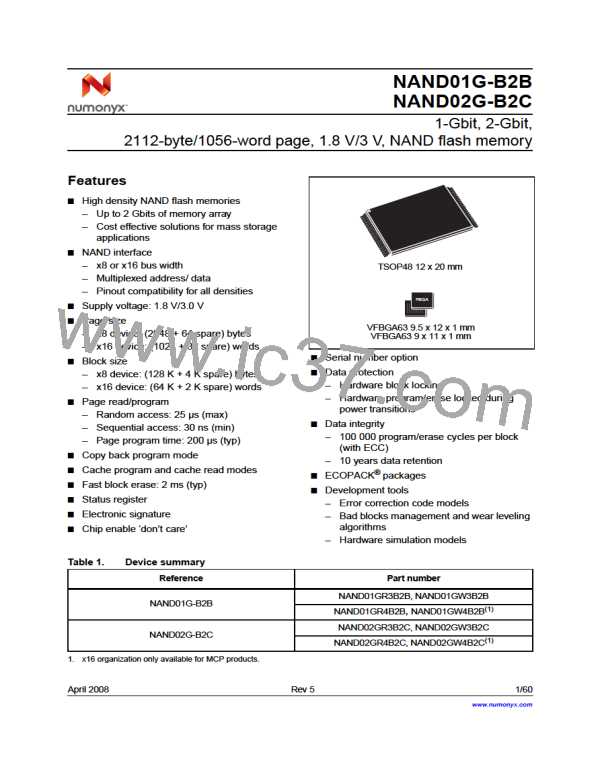Memory array organization
NAND01G-B2B, NAND02G-B2C
2
Memory array organization
The memory array is made up of NAND structures where 32 cells are connected in series.
The memory array is organized in blocks where each block contains 64 pages. The array is
split into two areas, the main area and the spare area. The main area of the array is used to
store data whereas the spare area is typically used to store error correction codes, software
flags or bad block identification.
In x8 devices the pages are split into a 2048-byte main area and a spare area of 64 bytes. In
the x16 devices the pages are split into a 1,024-word main area and a 32-word spare area.
Refer to Figure 5: Memory array organization.
2.1
Bad blocks
The NAND flash 2112-byte/1056-word page devices may contain bad blocks, that is blocks
that contain one or more invalid bits whose reliability is not guaranteed. Additional bad
blocks may develop during the lifetime of the device.
The bad block Information is written prior to shipping (refer to Section 8.1: Bad block
management for more details).
Table 4: Valid blocks shows the minimum number of valid blocks in each device. The values
shown include both the bad blocks that are present when the device is shipped and the bad
blocks that could develop later on.
These blocks need to be managed using bad blocks management, block replacement or
error correction codes (refer to Section 8: Software algorithms).
Table 4.
Valid blocks
Density of device
Min
Max
2 Gbits
1 Gbit
2008
1004
2048
1024
12/60

 NUMONYX [ NUMONYX B.V ]
NUMONYX [ NUMONYX B.V ]